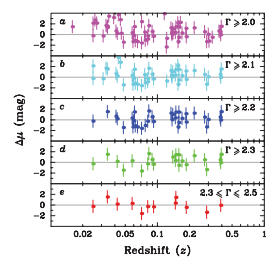Calibration does not always mean fixing a device, it sometimes means adjusting to solve a problem. In the early years of America, the famous Kentucky longrifles that conquered the frontier (and some British) had fixed sights. Since they couldn't be adjusted, frontiersmen - Kentucky was part of "The West" then - would adjust for wind, elevation and range by experience. If their shot was hitting low and left, they aimed high and right. Inference helped them get a better result.
By the early part of the 20th century, "Kentucky Windage" had become part of the American lexicon, to signify the practical, quick approach to solving problems - not always the best one, though. You will still find it in use in today's U.S. military, though they would prefer you sight in the weapons.(1)
And conceptually it's still used today in research, though most academics have never heard the term. But scientists use inference. In 2011, Saul Perlmutter, Brian P. Schmidt and Adam G. Riess received the Nobel prize in Physics for determining that the universe is expanding at a much faster rate than once believed, "through observations of distant supernovae". That discovery opened up a lot of new science questions. Black holes can't be measured but if they can be used to measure other things, like maybe the rate of expansion, well that's Kentucky Windage - for science.
The discovery of accelerating expansion was not trivial stuff. And using black holes to measure that rate is downright arcane, but a paper in Physical Review Letters says it can done. The authors say their new method can measure distances of billions of light years with a high degree of accuracy, using Super-Eddington accreting massive black holes that lie at the center of many galaxies.Their method can gauge distance at even high redshift, they say.(2)
In the paper they address how to detect these Super-Eddington accreting massive black holes and how their observational uncertainties can be used to deduce cosmological distances. These black holes reach a saturated luminosity as material is drawn into the black hole, becomes hotter and emits fantastic amounts of radiation - 1000X the energy produced by a large galaxy containing 100 billion stars. Saturated luminosities are well understood and have no 'cosmic evolution' that would have to be factored in to prevent skewing the results.
Using radiation to measure distances is not new, but using black holes is obviously trickier. It requires deriving the amount of radiation that reaches Earth from the energy being emitted from the vicinity of the black hole. The researchers say the radiation being emitted depends on the properties of the black hole and for Super-Eddington accreting massive black holes the amount of radiation emitted as the object draws matter into itself is actually proportional to its mass.


Knowing that, they infer the distance to the black hole and the time in the history of the universe when the energy was emitted.They believe their method allows them to measure distances much farther away and with more precision than supernovae.
What can it tell us? The big cosmological puzzle is the blanket combination of mysteries referred to as 'dark energy' and 'dark matter'. Dark energy, so far unmeasured, acts as some sort of opponent to gravity and would account for why expansion of the universe is accelerating rather than slowing down and observations of Super-Eddington accreting massive black holes at high redshift may provide some insight.
They will just need to measure a lot more of them and see if their cosmological model holds up.
Citation: Jian-Min Wang, Pu Du, David Valls-Gabaud, Chen Hu, and Hagai Netzer, 'Super-Eddington Accreting Massive Black Holes as Long-Lived Cosmological Standards', Physical Review Letters Volume 110 Issue 8, DOI: 10.1103/PhysRevLett.110.081301
NOTES:
(1) Kentucky windage, US Army style of 1943.
(1) Want to calculate your own redshift? Caltech has made it easy.





Comments